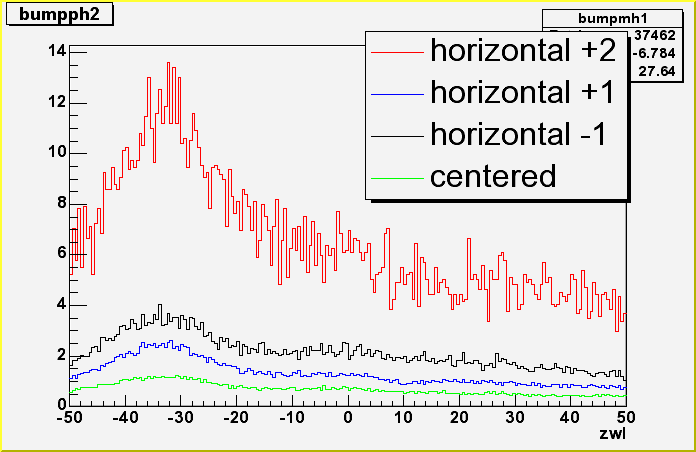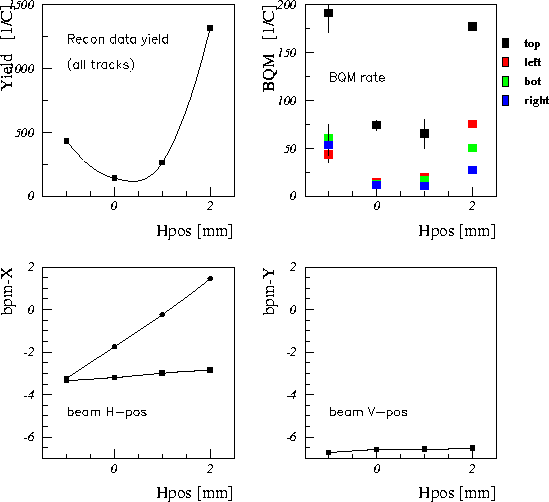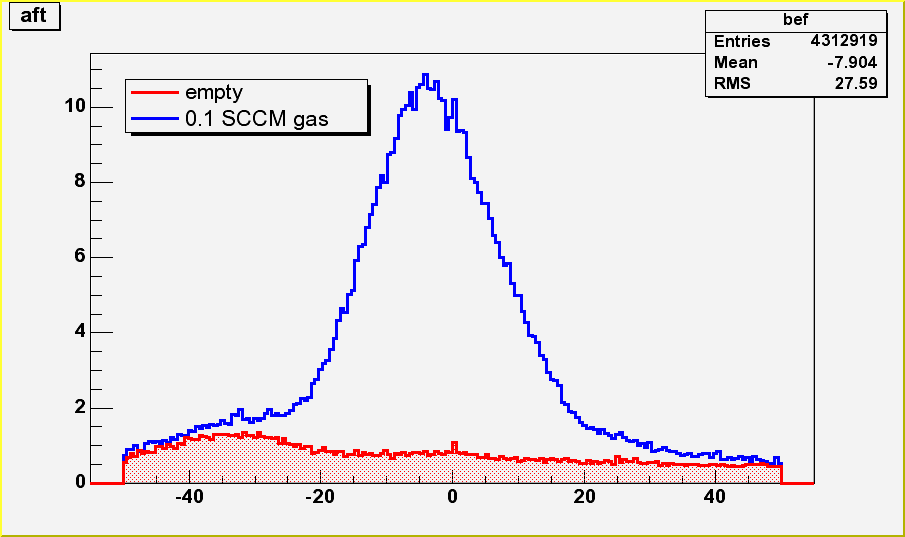| Subject: | [BLAST_ANAWARE] Analysis of collimator scan |
|---|---|
| Date: | Thu, 2 Oct 2003 18:01:38 -0400 (EDT) |
| From: | Tancredi Botto <tancredi@mitlns.mit.edu> |
| To: | Blast_Anaware <Blast_anaware@rocko.mit.edu> |
We have taken data for different H, V nominal beam positions at the target, with the collimator in. The horizonthal scan went from -1 to +2 mm in steps of 1 mm. Spectra of the (charge normalized) vertex position distribution were already sent out yesterday, and are shown as a function of beam H-position in the first attachment. While the total yield changes and gets worse the shape of the background does not seem to change much. This was indeed what we hoped for. Note that we will always measure the "stuff" between -30 -40 also with gas in the target. In the second attach - as a function of nominal Hor beam position (Hpos) - top-left = total integrated yield of reconstructed tracks top-right = BQM yields, *after* slit optimization bot-left = Beam H position measured at lpmx01, lpmx02 (beam pos monitors) bot-right = The vertical beam position (measured) during the scan Here we come to a consistent result wrt bqms. However now, at each beam pos, we re-optimized the slits. This was not the case of previous bqm scans (slits out). Scanning with the slits out is time efficient. However it seem to only give indication of a broad minimum in BQM rate, whereas the reconstructed background can still change considerably (compare a green and black in the first attach: they have the same slit out bqm rate). It is also good news that with this caveat the bqms are still useful. Given that the shape of our background proves indeed to be "universal", than we should be able to use the yield of events at -30-40 as a "normalization" for a future reference. This is shown in attach #3, where the two runs (gas/empty) were taken for the same beam conditions. After analysis of the V scan we should be able the tell about the best beam position. -- Tb,JS,NM ________________________________________________________________________________ Tancredi Botto, phone: +1-617-253-9204 mobile: +1-978-490-4124 research scientist MIT/Bates, 21 Manning Av Middleton MA, 01949 ^^^^^^^^^^^^^^^^^^^^^^^^^^^^^^^^^^^^^^^^^^^^^^^^^^^^^^^^^^^^^^^^^^^^^^^^^^^^^^^^
-- -------------------------------------------------------------------- jason seely 26.650.b massachusetts institute of technology 77 massachusetts avenue cambridge, ma 02139-4307 email: seely@mit.edu phone: 617.253.4772/6734 html: web.mit.edu/seely/www --------------------------------------------------------------------



This archive was generated by hypermail 2.1.2 : Mon Feb 24 2014 - 14:07:30 EST